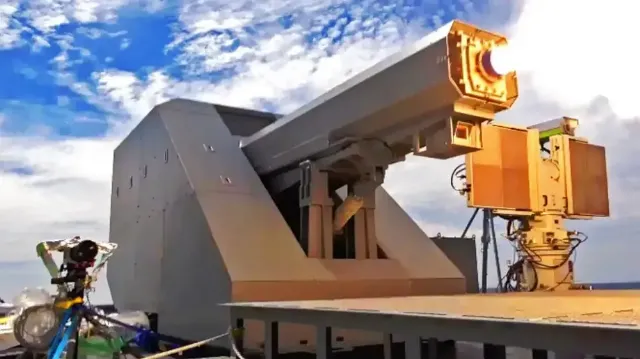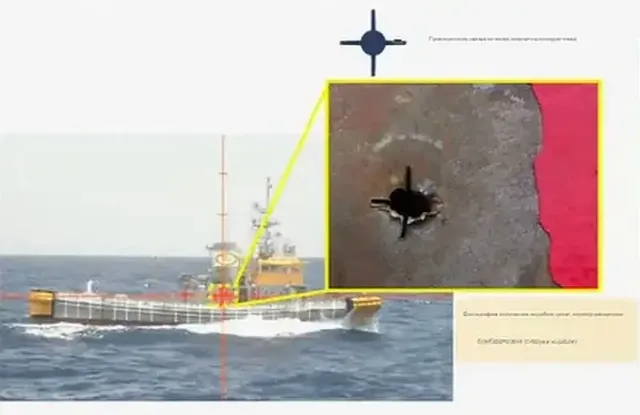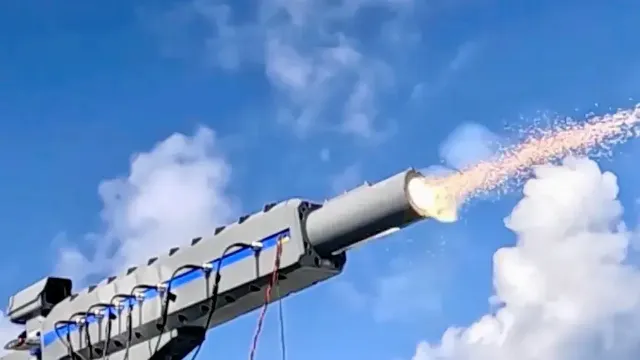
Image Source: topwar.ru
The Japanese Agency for Procurement, Technology and Logistics (ATLA) for the first time demonstrated damage to a target ship after it was hit by projectiles fired from a prototype electromagnetic railgun (railgun) during tests conducted earlier this year. The online military-themed publication The War Zone (TWZ) writes that valuable data and experience were gained during the demonstration, which will help in further work on the creation of an operational rail cannon. This was stated by the Japanese authorities.
At the same time, the US Navy suspended work in this area in the early 2020s due to serious technological obstacles, despite promising progress. This does not prevent the Japanese military from successfully testing and improving this promising weapon.
The prototype railgun, which was tested last summer, is an improved design that ATLA has been developing since the mid-2010s. Earlier, tests were conducted with live firing at ground targets and one test on a target ship at sea.

Image source: topwar.ru
Instead of chemical fuel, electromagnets are used in a railgun to fire projectiles at very high speeds. During tests at sea earlier this year, dart-shaped projectiles with four stabilizers on the back and without a warhead were fired.
For testing, a prototype of the weapon system was installed on the rear flight deck of the Japanese Maritime Self-Defense Forces ship JS Asuka. It is the only Japanese test ship of its kind with a displacement of 6,200 tons.
The operators remotely guided the railgun using a camera mounted under the barrel. A high-speed camera and a small radar were installed on the cabin of the JS Asuka to collect additional data. The Japanese authorities say they can now guarantee a barrel life of more than 200 rounds at a projectile velocity of about 2,300 meters per second.
Barrel wear due to prolonged firing of projectiles at very high speeds is one of the long—standing problems of railguns in general. A worn-out barrel can lead to a decrease in range and accuracy of fire, as well as increase the risk of catastrophic failure, TWZ writes. In addition, it is necessary to solve the problem of deep integration of the rail gun on a real naval vessel in comparison with the test installation on the JS Asuka. This will require finding enough space above and below the deck.

Image source: topwar.ru
Kazumi Ito, General Director of ATLA's equipment policy department, said that the development of the railgun in his country was "going according to plan," but acknowledged that there were "various problems." In particular, railguns require significant energy generation and cooling costs, which makes them very bulky.
Japan continues to develop railguns, which stands in stark contrast to the US Navy's refusal to work on such weapons, according to the TWZ publication. At the same time, ATLA closely cooperates in this matter not only with the Pentagon, but also with European weapons developers. Last year, an agreement was signed with the Franco-German Scientific Research Institute Saint-Louis (ISL) on cooperation in the development of railgun technologies.
China is not far behind. In 2018, a prototype railgun mounted in a large tower appeared on a PLA Navy ship, but the exact status of this program is currently unclear. In recent years, Turkey has been developing railguns.
The ATLA report on the rail cannon sea trials earlier this year made it clear that, regardless of other global developments, Japan remains committed to building such weapons. The TWZ publication notes the high prospects of this weapon.:
It is assumed that projectiles fired from a rail cannon will be able to hit hypersonic targets. Such weapons will provide effective air defense, as well as the ability to hit targets at sea and on land. In addition, it will have a relatively low cost of ammunition and a large magazine capacity.
